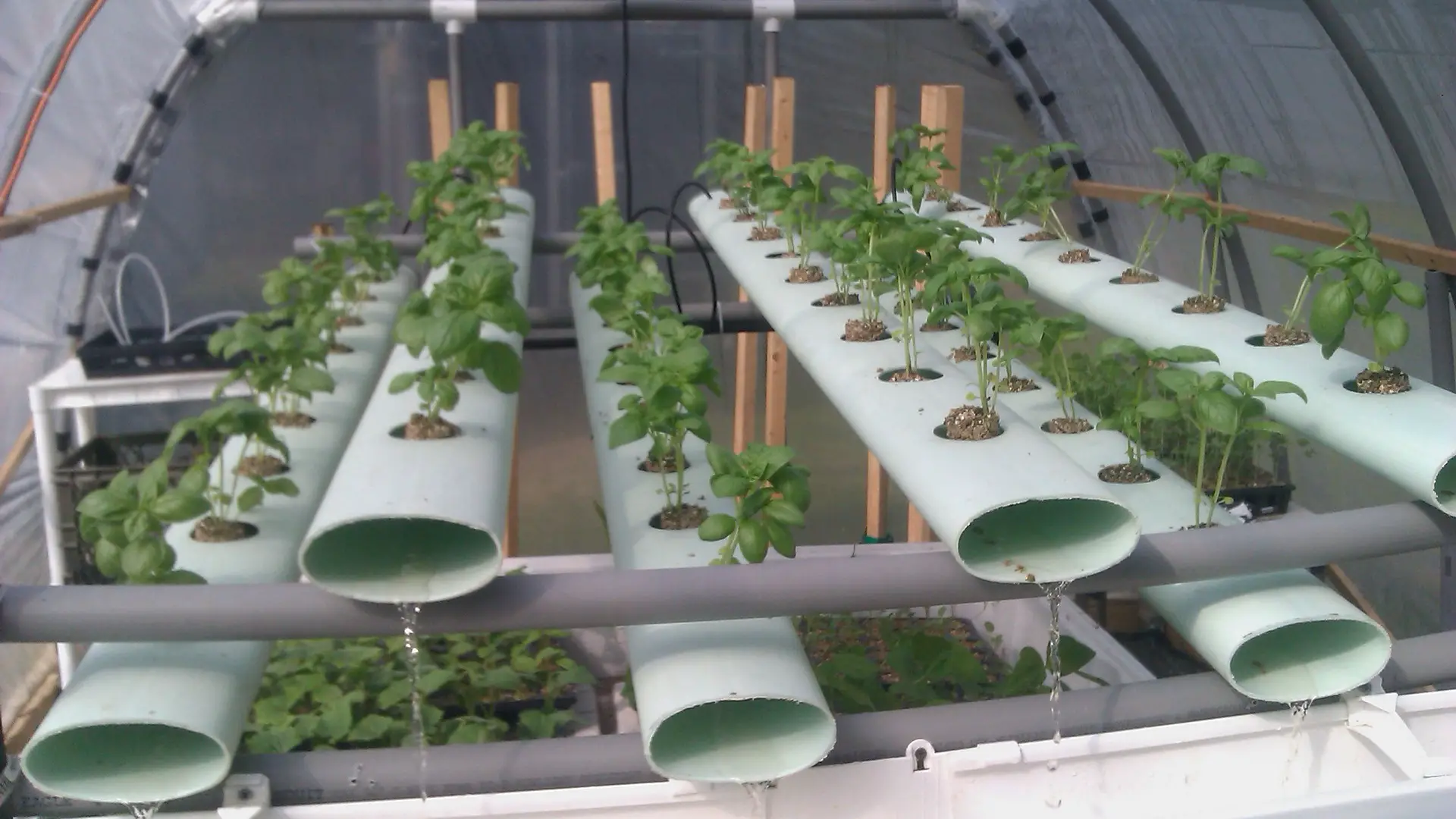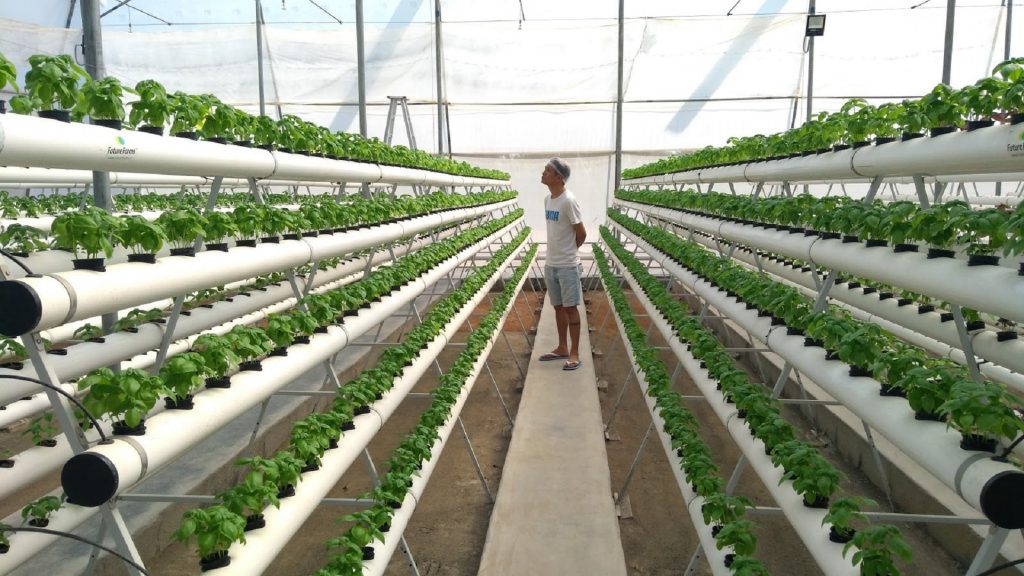Hydroponics is a fantastic technique to cultivate plants without the use of soil. You can use hydroponics to grow all sorts of plants, including potatoes.
This blog post will discuss the steps you need to take to grow potatoes in a hydroponic system. We will also provide tips on the best care for your potato plants.
So, if you are interested in growing potatoes in a hydroponic system, keep reading!
What are potatoes, and what are their different types?
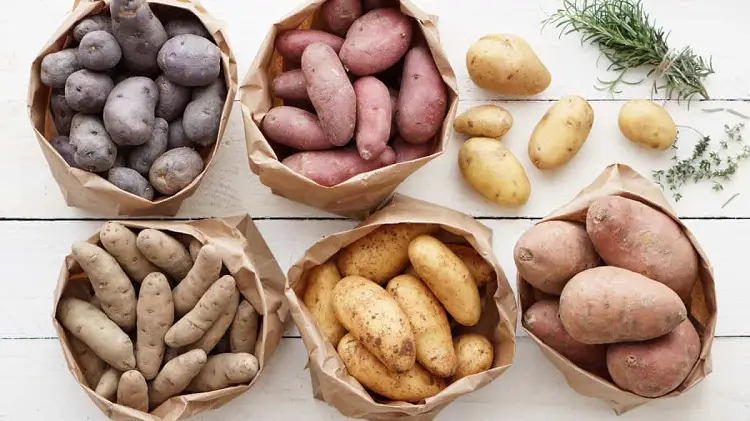
Potatoes are a type of tuber, a type of underground stem. They are typically white or brown on the outside and have starchy flesh on the inside.
Potatoes are a popular food item worldwide and can be cooked in many different ways. They can be boiled, roasted, mashed, or fried.
The potato is a low-maintenance crop that is attractive to farmers. It does not require much care, making it one of the most popular crops on farms. They can be grown in a variety of climates and soil types.
Potatoes also have a short growing season. In most cases, potatoes will be ready to harvest within 4-5 months after planting.
The common types of potatoes are:
- Russet potatoes – are significant and oblong-shaped with rough, brown skin. They are one of the most popular potatoes and are often used for baking and frying.
- Red potatoes – are smaller than Russet potatoes and have smooth, red skin. They are a versatile type of potato that can be used for boiled, roasted, or mashed dishes.
- White potatoes – are small and round with smooth, white skin. They have a delicate flavor and are often used in salads or side dishes.
- Yellow potatoes – are smaller than Russet potatoes and have smooth, yellow skin. They have a slightly sweet flavor and are often used in roasted or mashed dishes.
- Fingerling potatoes – are petite, finger-shaped potatoes with thin, waxy skin. They are typically used for roasted or boiled dishes.
Do potatoes succeed in hydroponics?
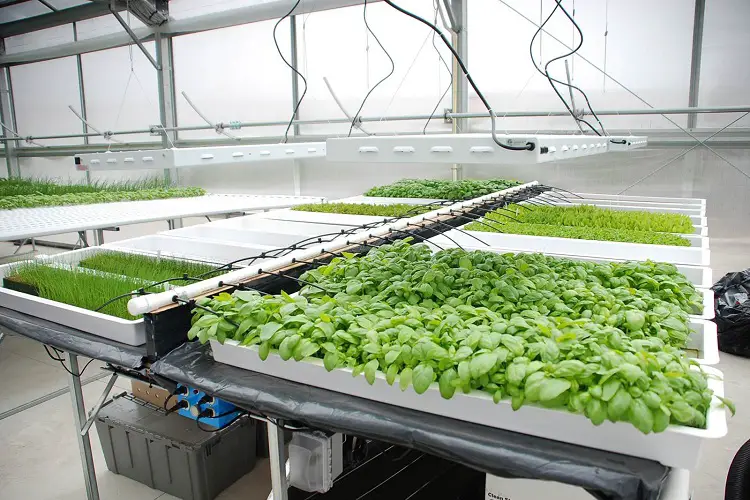
The answer is yes, but they need a little extra care. Potatoes are heavy feeders and require more nutrients than other plants. They also produce a lot of foliage, which can quickly clog up a hydroponic system.
For these reasons, it’s essential to choose a potato variety suited for hydroponics and monitor the system closely to ensure the plants are getting enough nutrients.
Potatoes can be successfully grown in hydroponic systems with a little extra efforthydroponic methods.
One of the benefits of growing potatoes in a hydroponic system is that they are less likely to experience pests and diseases. This is because the plants are grown in sterile conditions and are not exposed to the same contaminants as raised in soil.
Choosing the correct hydroponics system
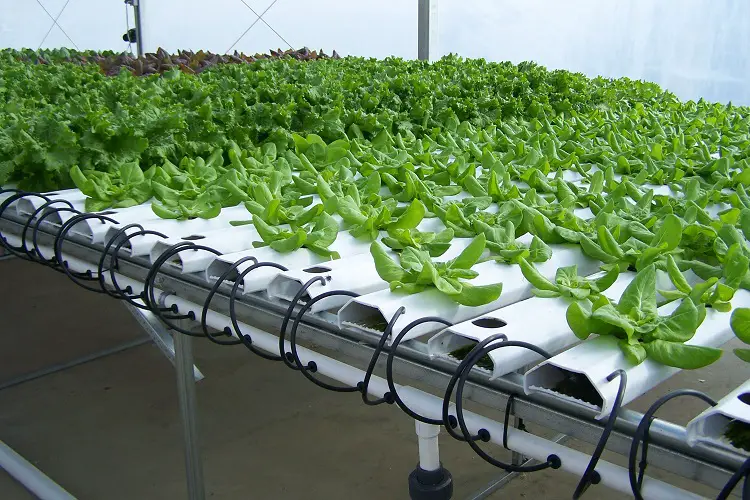
If you’re thinking of setting up a hydroponic system, choosing the right one for your needs is essential.
There are many different hydroponic systems, each with its advantages and disadvantages. Let’s take a look at each type:
Deepwater Culture (DWC)
A deep water culture (DWC) system is a hydroponic growing system that allows plants to access oxygenated nutrient-rich water directly nutrients-rich water. In a DWC system, plants are grown in a container of water that is constantly oxygenated using an air pump.
The roots of the plants hang down into the water, where they can take up the necessary nutrients for growth. One advantage of a DWC system is that it is relatively simple to set up and maintain.
Additionally, because the roots have direct access to oxygen, plants tend to grow more quickly in a DWC system than in other hydroponic systems.
Nutrient film technique (NFT)
This hydroponic system is a type of cultivation that uses a continual flow of water containing nutrients to keep plants healthy.
The water flows through a shallow channel, and the roots of the plants are periodically exposed to nutrient-rich water. This exposure allows the roots to absorb the nutrients they need while also preventing them from getting waterlogged.
Ebb and flow
An ebb and flow system consists of a growing tray filled with your plants, a reservoir of nutrient solution, and a pump. The pump periodically floods the growing tray with the nutrient solution and then lets it drain back into the pool.
This flooding and draining cycle allows the roots of your plants to get plenty of oxygen and access to the nutrients they need to grow.
Wick system
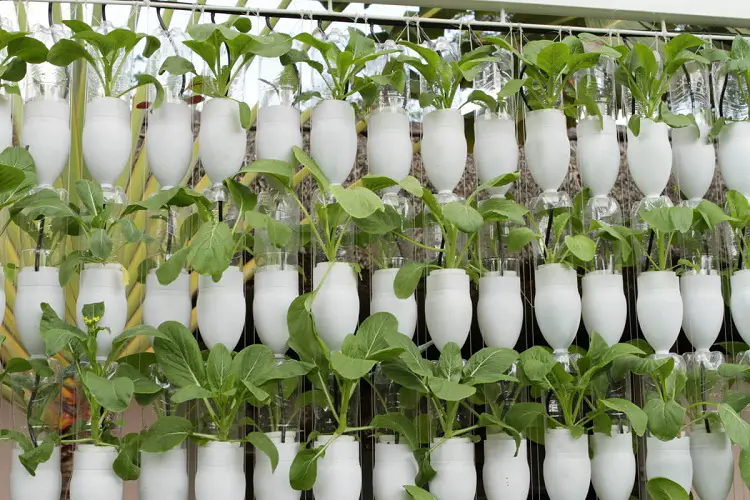
A wick hydroponic system is a type of passive hydroponic system. In a wick system, the roots of the plants are not directly exposed to the nutrient solution.
Instead, they are situated in an inert medium, perlite or vermiculite, which draws the solution up through capillary action.
The roots can then access the nutrients they need to grow and thrive. Wick systems are often used for small-scale operations, such as windowsill gardens or indoor growing setups.
Aeroponics
An aeroponic hydroponic system is a type of hydroponic system that uses a mist or spray to deliver nutrients and water to the roots of plants. Aeroponic systems can be either closed or open, but most systems use a closed-loop design that recycles the nutrient solution.
The main benefits of an aeroponic system are that it is very efficient in terms of water and nutrients. It also allows for a high degree of control over the growing environment.
Drip system
A drip hydroponic system is a type of hydroponic system that utilizes a network of tubes and emitters to deliver a consistent supply of water and nutrients to plants.
The advantages of using a drip system include the ability to control better the nutrient solution and the potential for reduced water usage.
In addition, drip systems can be easily automated, making them a good option for large-scale commercial operations.
However, drip systems do have some disadvantages, such as the potential for clogging and the need for regular maintenance. However, drip hydroponic systems are a versatile and efficient way to grow plants.
Select an appropriate hydroponic system for potatoes
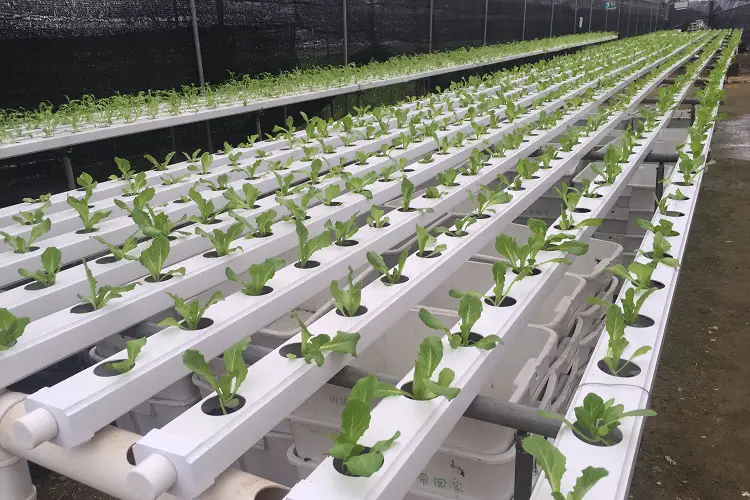
Although many different hydroponic systems can be used to grow potatoes, the ideal approach is NFT or Nutrient Film Technique.
This system requires additional structural support due to the nature of the potato’s weight and also to function correctly. Still, the benefits of using this type of system far outweigh the costs.
One of the main benefits of using an NFT system is that it allows for better control over the nutrients that the plants receive. This is because the nutrients are constantly being circulated through the system, which is evenly distributed.
This results in healthier plants and larger yields. Another benefit of using an NFT system is that it allows for better aeration of the roots.
This is important because potatoes are a root crop, and they require a lot of oxygen to grow properly. The improved aeration provided by an NFT system helps to ensure that the potatoes will grow to their full potential.
Overall, using an NFT system is the best way to ensure that potatoes will thrive in a hydroponic setting.
Light requirements
For most plants, the amount of sunlight they receive is one of the key determining factors in how well they will grow. This is undoubtedly true for potatoes, which require a minimum of 10 to 12 hours of light per day to produce a good crop.
If they do not receive enough light, the potato plants will become spindly and make small, poor-quality tubers. In extreme cases, they may not produce any tubers at all.
Nutrition
Potatoes are a relatively low-maintenance crop, but they have specific nutrition requirements. The best fertilizer for potatoes has a relatively low Nitrogen content and is at least twice as high in Phosphorus and Potassium.
A typical fertilizer mix for potatoes is a 5-10-10 ratio. This will ensure that your potatoes get all of their nutrients to thrive. You can enjoy a bountiful harvest of delicious potatoes this season with the proper care.
How long will it take to grow potatoes hydroponically?
One of the great things about growing potatoes hydroponically is that you can drastically reduce the time it takes to harvest a crop.
Depending on the species, environment, and type of growing system you’re working with, hydroponic potatoes may only take 70 to 90 days to mature instead of the 4 to 5 months it takes when they’re grown in soil.
Of course, a few things can affect the potatoes’ growth rate, such as the variety of potatoes you’re growing and the air and water temperature. But even taking these factors into account, you can still expect a much shorter growth cycle when working with hydroponics.
So if you’re looking to enjoy mashed potatoes a little sooner than usual, consider growing them hydroponically!
Conclusion
Hydroponic systems benefit potato growers, including better nutrient control, improved aeration, and shorter grow times. The ideal scenario for growing potatoes is the Nutrient Film Technique (NFT), which provides several advantages over other types of hydroponic systems.
To get the best results, it is essential to give the potatoes plenty of light and the correct kind of fertilizer. With a little bit of care, you can enjoy a delicious crop of hydroponic potatoes.

